ARTNOUVEAU2 - NIH/INP Exhibition
31-03-2022
Expressions of Gesamtkunstwerk
Art Nouveau, Szecesszió, Sezession, Jugendstil
Opening: 10th of March 2022 at 14.30
Duration: 10th of March – 19th of June 2022
Place: Pelișor Castle, Peleș National Museum, Sinaia, Prahova, Romania
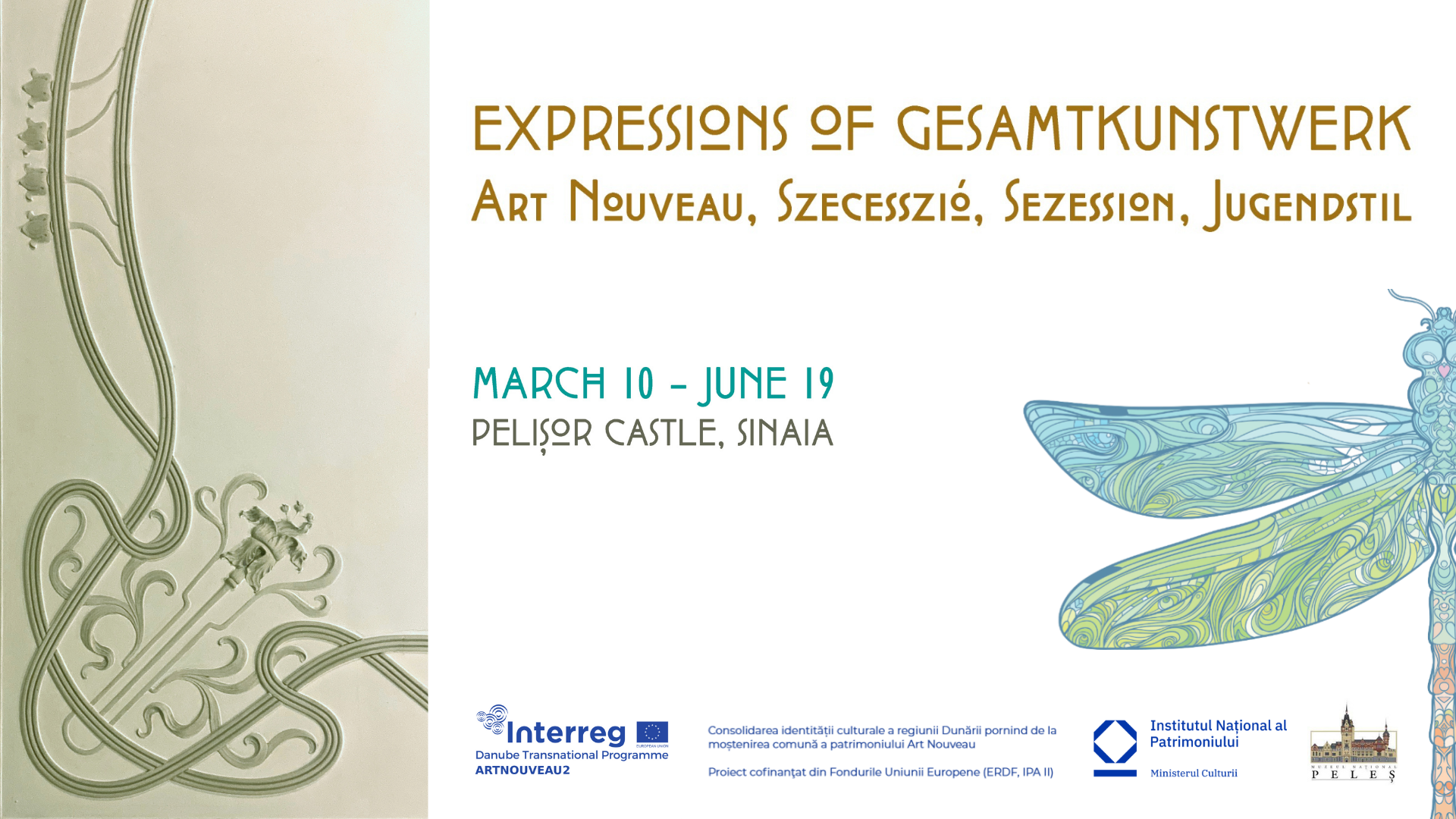
March 10, the National Heritage Institute (NIH / INP) opened the exhibition dedicated to the Art Nouveau style in Romania, at The Pelișor Castle in Sinaia, in partnership with Peleș National Museum.
The name of the exhibition is quite self-explanatory and informative: ”Expressions of Gesamtkunstwerk. Art Nouveau, Szecesszió, Sezession, Jugendstil”. INP aimed to enrich Romanians’ knowledge and appreciation of their local Art Nouveau by following the diversity of its manifestations across both regions and artistic expressions – be it architecture, interior and furniture design or applied art. Along with experimenting and immersing themselves into the central concept of Gesamtkunstwerk, admirers of art and history visiting the Pelișor Castle – one of Romania’s busiest touristic route – and those following the itinerant exhibition throughout the country - will discover how Sezession, Szecesszió and Jugendstil travelled through Transylvania while Art Nouveau expressed in the Old Kingdom outside the Carpathians’ Arc. The exhibition contributes to the understanding of the history, ideas, character, manifestations, specificity, value and importance of the less known Art Nouveau heritage of Romania – which is essential for its preservation and promotion.
Project coordinator: Irina Iamandescu
Scientific consultant and text reviser: Francoise Pamfil
Research and documentation: Simina Stan, Florentina Murea-Matache, Ana Chiricuță, Lucia Leca
Comunication: Irina Dobriță
Graphic design: Ana Chiricuță, Lucia Leca
Photos from the opening of the exhibition

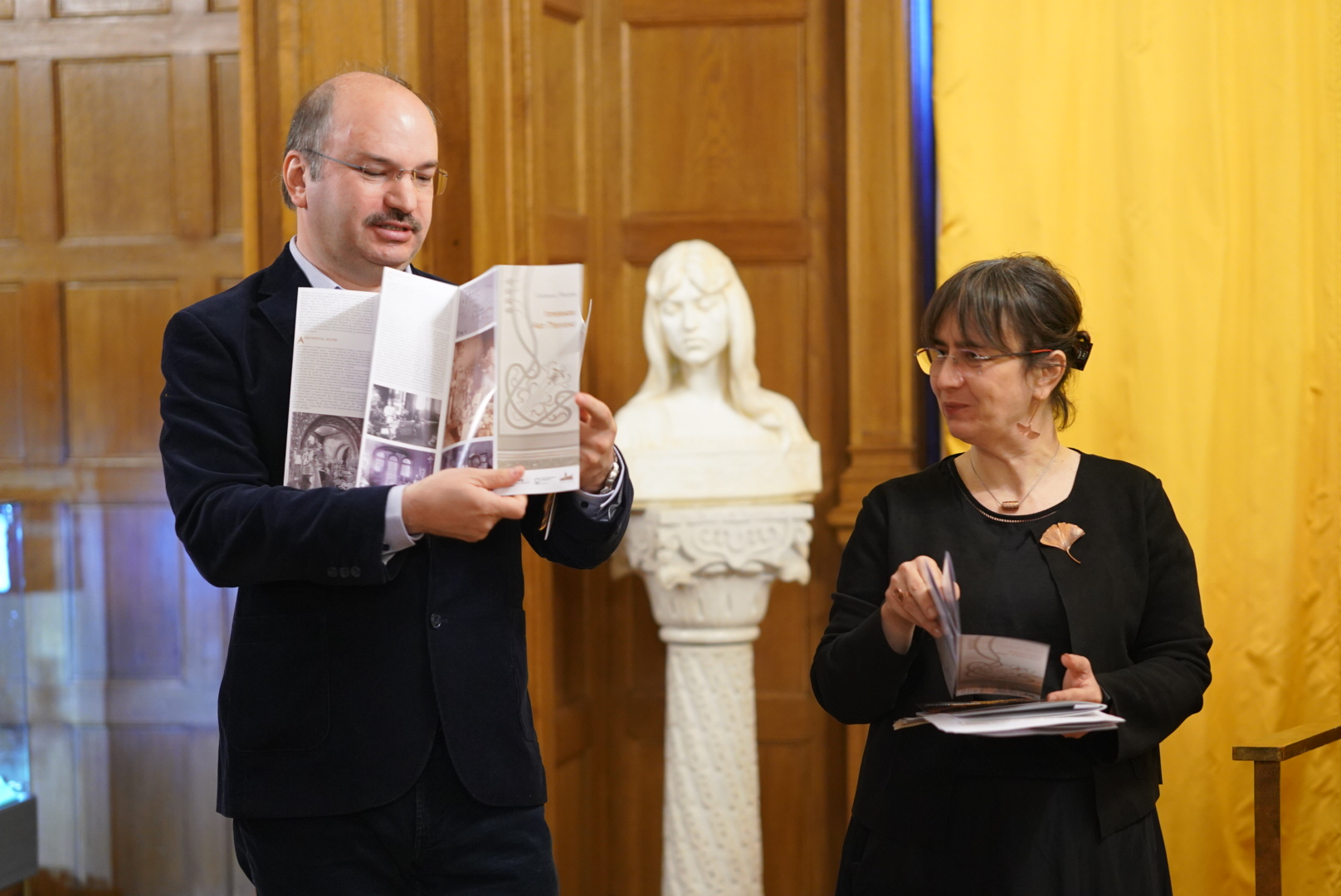
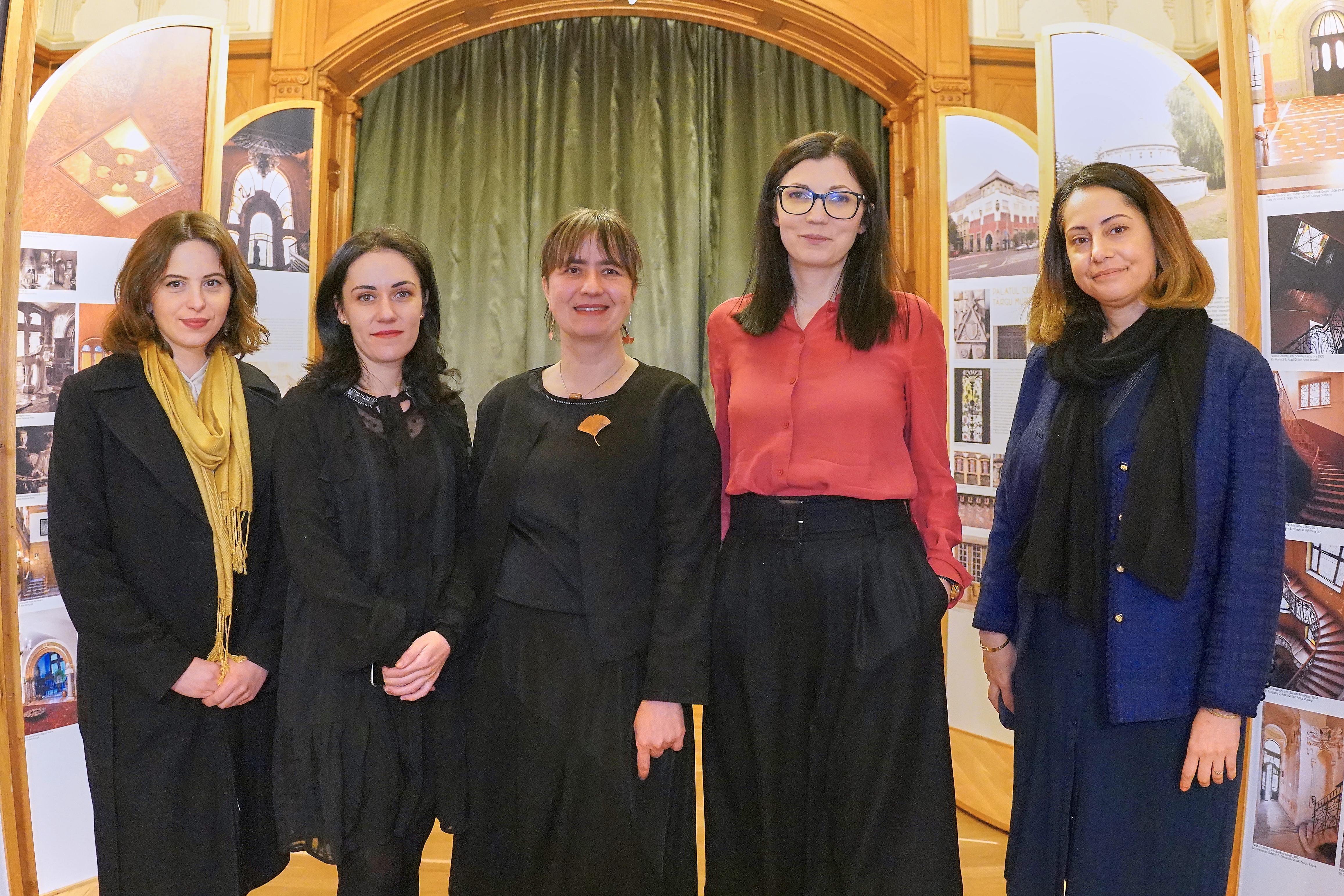


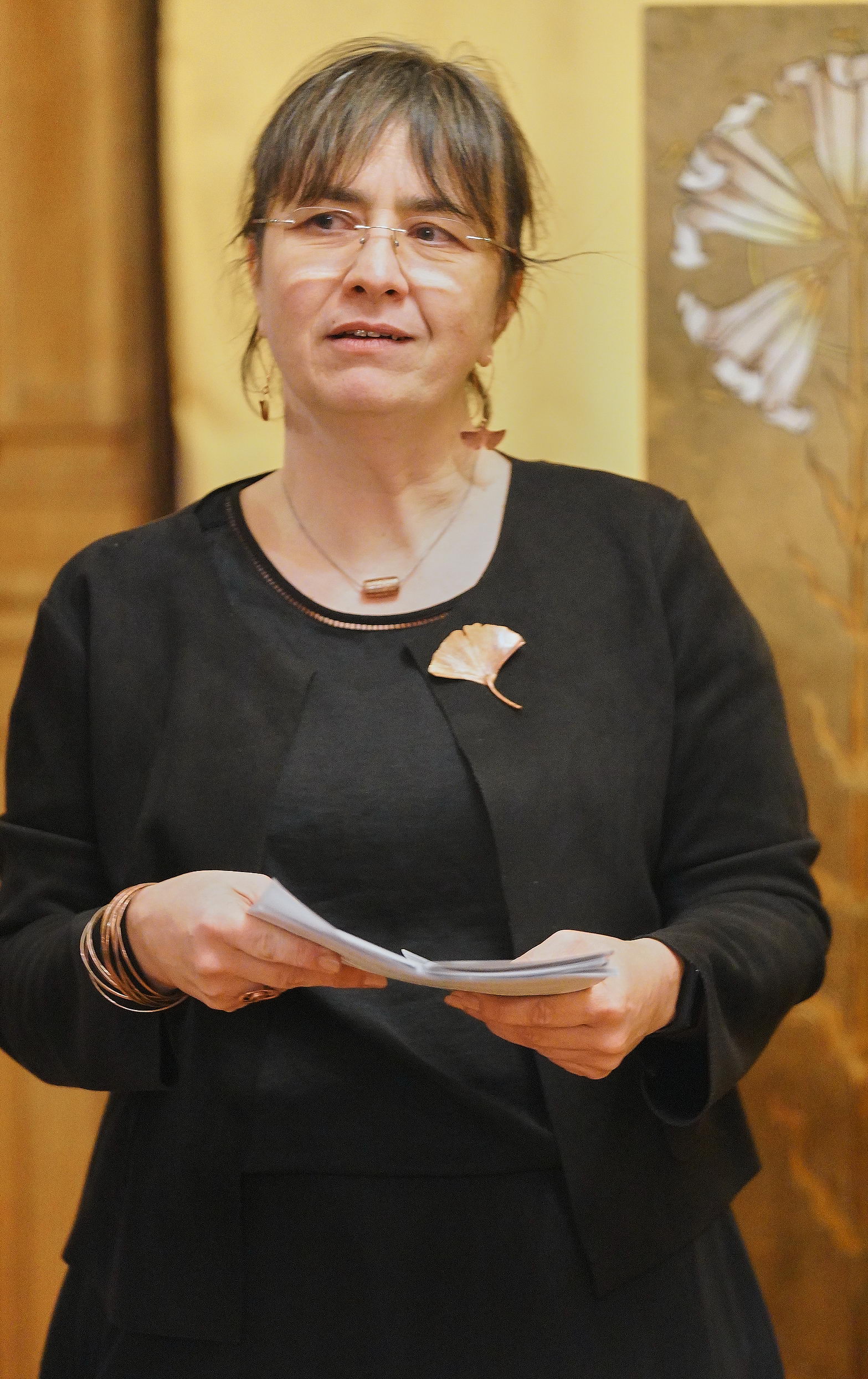
Photo Irina Iamandescu
"Gesamtkunstwerk or Total Art can be seen as a collaborative effort of many artists who managed to transform everyday life into art. Bringing the exhibition among objects and decorative elements that are highly valuable and representative for how Art Nouveau charmed its first adopters helps us show how this movement extended beyond the confines of galleries, into people's living rooms, kitchens, staircases and gardens through decorations, furniture, vases, lamps, textiles and the like. The choice of this central theme for the exhibition, Gesamtkunstwerk, is also a metaphor for bringing the general public closer to this liberating, daring style generically known as Art Nouveau. This is the main reason for this Art Nouveau itinerary, which we hope will be followed by as many admirers of beauty, history and heritage as possible" Irina Iamandescu, project coordionator for NIH. The exhibition will be open at Târgu Mureș in July and at Timișoara in September.
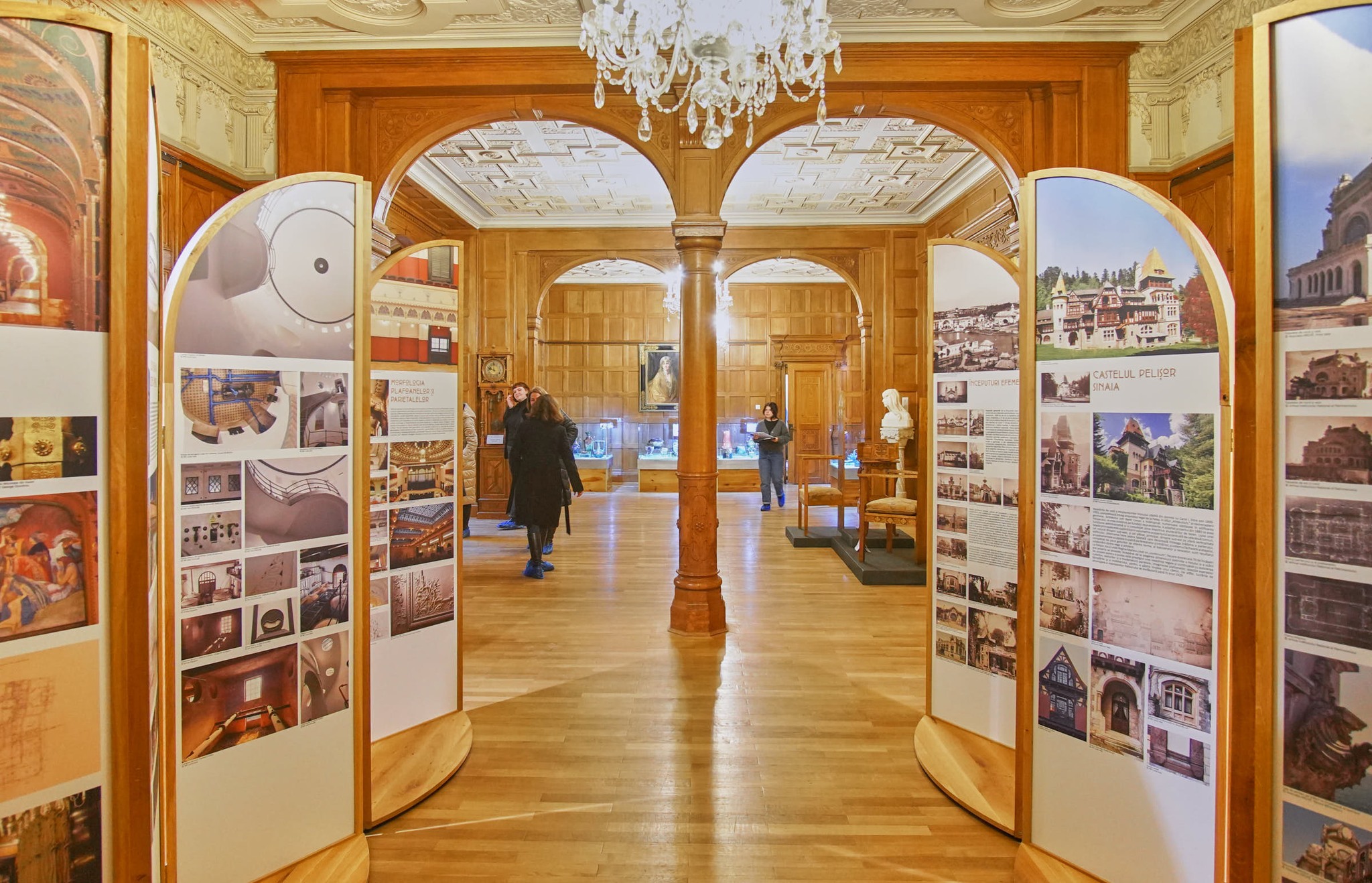

The sections of the exhibition include, in addition to a couple of spectacular buildings representative of the Gesamtkunstwerk in Romania, a series of details grouped into themes such as: the art of wood carpentry, floor geometries and modulations, mural decorations, expressions of lightning and heating objects, the craftsmanship of furniture, decorative objects and others alike. Elements with similar characteristics found both in the intra-Carpathian and extra-Carpathian arc have in common the effort to testify, at different paces, to the Art Nouveau / Szecesszió / Sezession / Jugendstil architectural phenomenon and the way it coexisted from the end of the 19th century until the beginning of the 1920s in this part of Europe. The cities represented in the exhibition through their Art Nouveau heritage are: Arad, Baia Mare, Băile Govora, Borsec, Botoșani, Brașov, Brăila, București, Calafat, Cluj-Napoca, Constanța, Corabia, Covasna, Craiova, Deva, Ditrău, Gheorgheni, Iași, Miercurea Ciuc, Oradea, Ocna Sibiului, Odorheiu Secuiesc, Sfântu Gheorghe, Sinaia, Suceava, Târgu Mureș and Timișoara.
Details from Pelișor

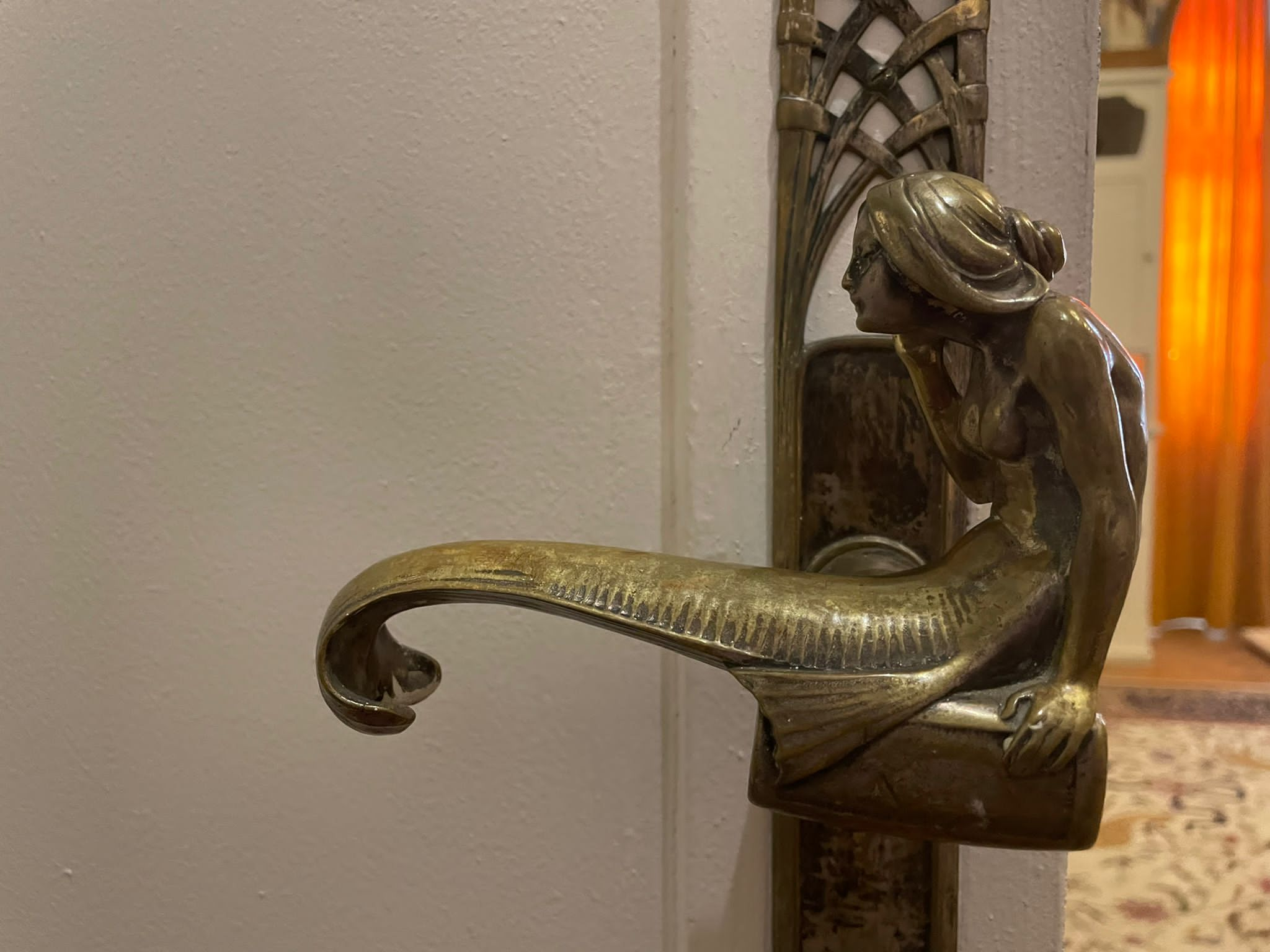
Pelișor Castle - a manifestation of Gesamtkunstwerk
Pelișor Castle - the first building to host the exhibition – is a testimony of Gesamtkunstwerk, a result created through the involvement of Queen Mary, who adopted and put to value the Art Nouveau style in all its nonconformist and spectacular essence. The Darmstadt School had a considerable influence on the furniture design of Queen Mary. The Scotsman Baillie Scott was one of the most important European representatives of the Arts and Crafts movement. He decorated many rooms in the palace of Duke Ernst Ludwig von Hesse in Darmstadt, who was the grandson of Queen Victoria of Great Britain and husband of Victoria Melita, Queen Mary's younger sister.
The furnishings for Pelișor’s Golden Room and bedroom, designed around 1909 at the court of the Duke and Duchess Hesse, made at the School of Arts and Crafts on the site of the royal residences, are the most unusual works preserved in the Castle’s collection. The lily and iris flowers are the creative motifs, including on the backs of chairs and armchairs. The Bernhard Ludwig Viennese workshop supplied a number of furniture fittings, including those in the princes' playroom. Bernhard Ludwig's son later became the most important decorator in Sinaia. He adopted the Sezession design, governed by geometric elements with gently curving lines and sculptural inserts.
Thanks to the Romanian partners involved in the development of the exhibition and related events:
Peleș National Museum: Narcis Dorin Ion, general director; Mircea-Alexandru Hortopan, heritage director - for opening, hosting and completing the exhibition with representative ceramic and glass artefacts, made by world-renowned artists for this reference style, from the Peleș Museum collection.Târgu Mureș County Museum - Palace of Culture: Szántó Loránt, head of service; Oniga Erika, museographer.Aquatim - Water Museum: Ilie Vlaicu, general director; Loredana Leordean, educational programmes coordinator.
Exhibition Project supported by:
National Museum of Art of Romania, National Museum of History of Romania, Teleorman County Museum, National Archives of Romania, County Service of National Archives of Iași, County Service of National Archives of Mureș, Institute of Art History "G. Oprescu", Oradea Heritage,
ARCHÉ Association, BETA. Bianca Azap & Dan Purice, Dragoș Andreescu. Monumentalist, Andreea Andronic, Alexandra Baboi, Raluca Bărbulescu, Victor Bunoiu, Veronica Burtea, Ana Dumitru, George Dumitriu, Alexandru Duță, Rebeca Gag, Mădălin Ghigeanu, Ioan Grămadă, Camil Iamandesu, Raluca Iosipescu, Thomas Laschon, Irina Leca, Anca Majaru, Alexandru Mexi, Ovidiu Micșa, Ana Maria Pop, Adrian Spirescu, Matei Eugen Stoean, Liana Carina Tătăranu, Árpád Udvardi.
Exhibition poster of the ARTNOUVEAU2 project in the entrance of the Pelisor Hall.

Photo credits: Camil Iamandescu, Elena Fînariu, Florentina Murea-Matache
The exhibition is part of the National Institute of Heritage Romania’s participation in the ARTNOUVEAU2 project within the Danube Transnational Program Interreg scheme co-financed by European Union funds (ERDF, IPA II).
